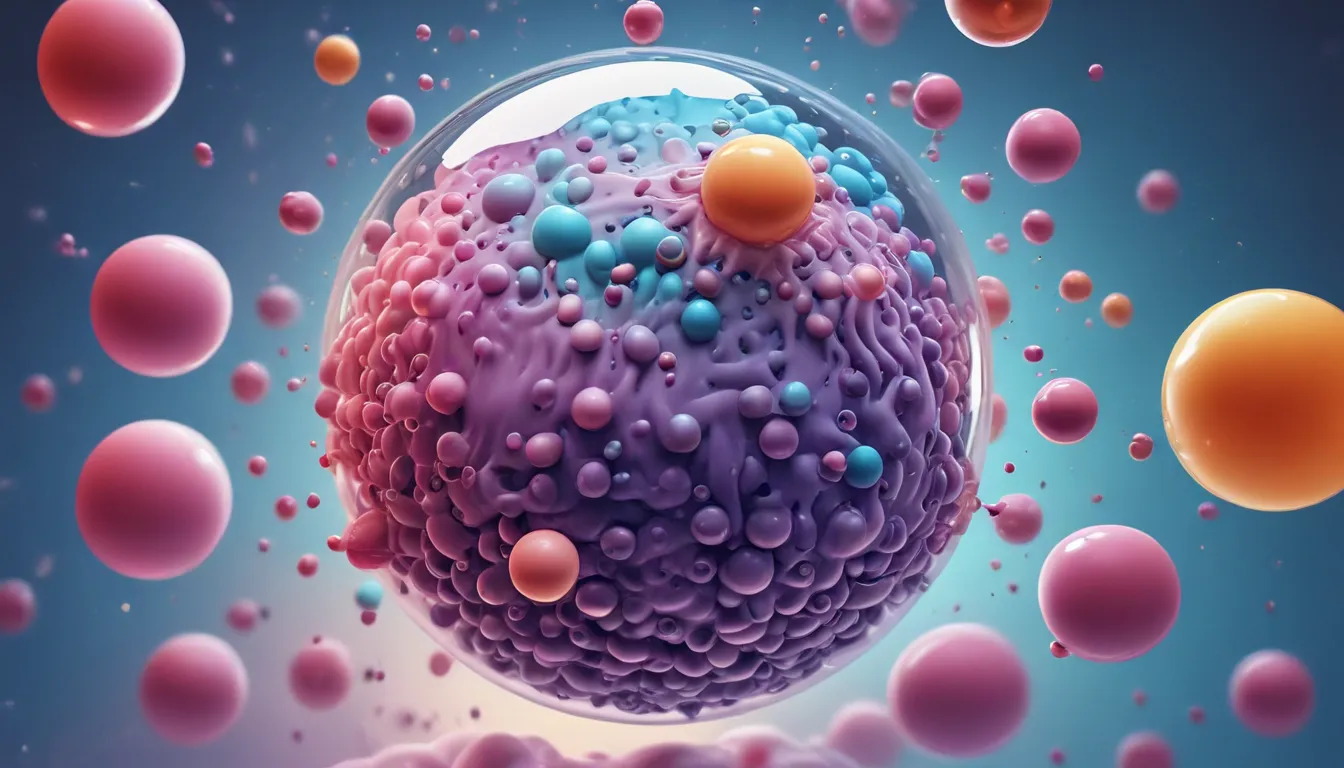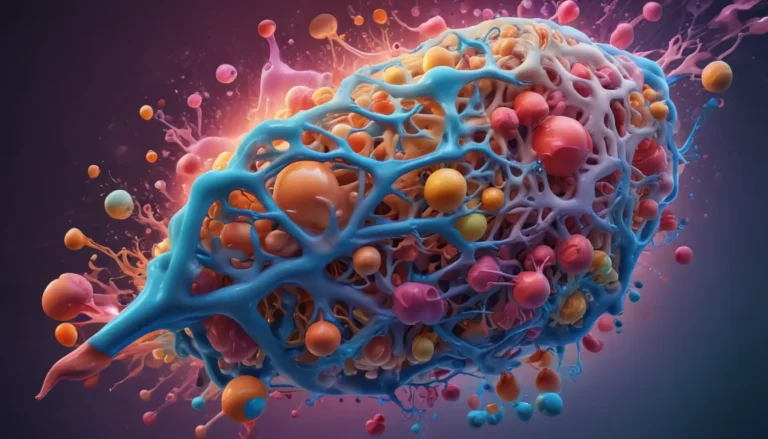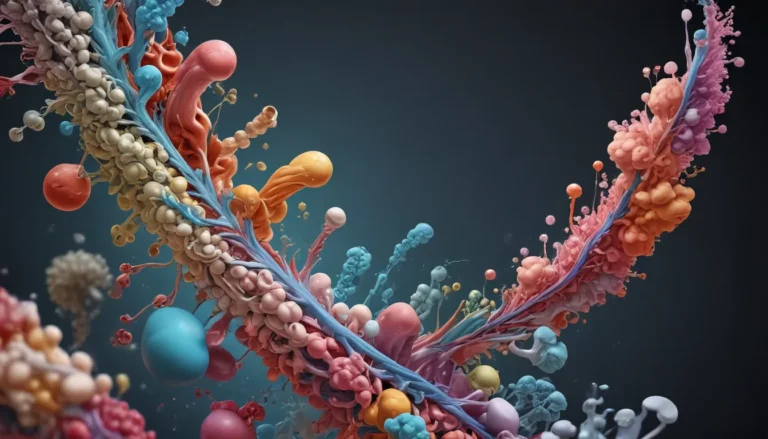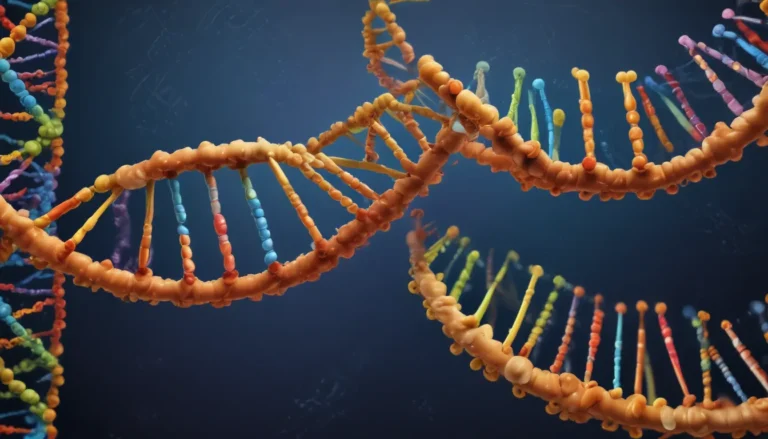A Note About Images: The images used in our articles are for illustration purposes only and may not exactly match the content. They are meant to engage readers, but the text should be relied upon for accurate information.
Phospholipids are the unsung heroes of the biological world, quietly working behind the scenes to maintain the integrity and functionality of living organisms. These essential molecules are not only the structural backbone of cell membranes but also play a pivotal role in various biological processes. Join us on a journey as we uncover eight extraordinary facts about phospholipids that will deepen your understanding of these remarkable molecules and their significance in the world of biology.
The Structural Marvel of Cell Membranes
At the core of every cell membrane lies phospholipids, the building blocks that provide a crucial structural framework. These versatile molecules possess a unique structure, with hydrophobic tails and hydrophilic heads, that allows them to arrange themselves into a lipid bilayer. This lipid bilayer acts as a protective barrier, controlling the movement of molecules in and out of cells and maintaining the integrity of cellular compartments.
Embracing Dynamic Fluidity
One of the most remarkable features of phospholipids is their ability to exhibit dynamic fluidity within the cell membrane. This fluid nature enables the membrane to adapt to changing conditions, ensuring the smooth transportation of proteins and other molecules across the membrane. The flexibility of phospholipids plays a vital role in maintaining cellular homeostasis and functionality.
The Guardians of Selective Permeability
Phospholipids in cell membranes possess a remarkable property known as selective permeability, which allows them to regulate the passage of substances into and out of the cell. This selective nature ensures that cells maintain a stable internal environment while facilitating the exchange of essential nutrients, ions, and waste products, essential for sustaining cellular functions.
Navigating the Pathways of Cell Signaling
Beyond their structural role, phospholipids are key players in cell signaling processes, serving as precursors for essential signaling molecules such as diacylglycerol (DAG) and inositol triphosphate (IP3). These signaling molecules are instrumental in intracellular communication, regulating critical cellular processes like metabolism, growth, and apoptosis. The intricate dance of phospholipids in cell signaling highlights their significance in orchestrating the physiological functions of living organisms.
Fueling the Engine of Fat Digestion and Absorption
In the realm of digestion, phospholipids emerge as unsung heroes, playing a vital role in the breakdown and absorption of dietary fats. Bile salts produced by the liver contain phospholipids that emulsify fat globules, increasing the surface area for digestive enzymes to efficiently break down fats. This process paves the way for the effective absorption of nutrients and ensures optimal energy utilization within the body.
Crafting the Landscape of Lipid Rafts
Phospholipids exhibit a fascinating ability to cluster together with cholesterol and specific proteins to form specialized microdomains known as lipid rafts. These lipid rafts serve as platforms for the assembly and organization of signaling molecules, facilitating various cellular processes such as cell adhesion, receptor activation, and intracellular trafficking. The intricate interplay of phospholipids in lipid raft formation underscores their role in orchestrating cellular functions with precision.
Pioneering the Frontier of Drug Delivery Systems
Owing to their unique properties, phospholipids have found widespread applications in the development of drug delivery systems. Liposomes, composed of phospholipid bilayers, serve as versatile carriers that can encapsulate drugs, protecting them during transport and delivering them to specific targets within the body. This targeted drug delivery approach enhances therapeutic efficacy and minimizes side effects, revolutionizing the landscape of pharmaceutical interventions.
Embracing the Tapestry of Structural Diversity
Phospholipids showcase a rich tapestry of structural diversity, with different types found across various cell types and organelles. While phosphatidylcholine and phosphatidylethanolamine dominate the cell membrane landscape, phosphatidylinositol takes center stage in intracellular signaling pathways. This structural diversity allows phospholipids to specialize and perform specific functions tailored to the needs of different cellular compartments, enhancing the precision and efficiency of biological processes.
Unveiling the Significance of Phospholipids
In conclusion, phospholipids stand as remarkable molecules that wield immense influence over the intricate machinery of living organisms. From their pivotal role as the structural backbone of cell membranes to their diverse involvement in critical biological processes, phospholipids emerge as silent orchestrators of life’s complexity. Understanding the extraordinary facts about phospholipids not only expands our knowledge of biology but also underscores their indispensable role in sustaining the integrity and functionality of cells. Let us continue to marvel at the wonders of phospholipids and appreciate the profound impact they have on our health and well-being.
FAQs
- What are phospholipids?
-
Phospholipids are a type of lipid that consists of a glycerol molecule, two fatty acid chains, and a phosphate group. They are vital components of cell membranes and play essential roles in cellular functions.
-
How do phospholipids contribute to cell membrane structure?
-
Phospholipids organize themselves into a bilayer formation, with hydrophobic fatty acid chains facing inward and hydrophilic phosphate groups facing outward. This arrangement creates a barrier that separates the interior of the cell from the external environment.
-
What is the significance of phospholipids in cellular function?
-
Phospholipids participate in numerous biological processes, including cell signaling, molecular transport across membranes, and maintenance of membrane fluidity. They also serve as precursors for vital molecules involved in signaling pathways and hormonal regulation.
-
Can we obtain sufficient phospholipids from our diet?
-
Our bodies have the capacity to synthesize phospholipids, but they can also be sourced from dietary options such as eggs, soybeans, and sunflower seeds. Maintaining a balanced diet is crucial to ensure an adequate intake of phospholipids for optimal cellular function.
-
Are phospholipids exclusively found in animal cells?
- No, phospholipids are ubiquitous in all living organisms, spanning plants, animals, and microorganisms. They play essential roles in the cellular architecture of diverse species, emphasizing their universal significance in biological systems.
Discover the Beauty of Biology
As we delve deeper into the realm of phospholipids, their intricate dance within the biological landscape unfolds before us, revealing a world of precision and complexity. Join us on this captivating journey of exploration and discovery as we unravel the wonders of these extraordinary molecules that shape the very fabric of life. Let us continue to celebrate the marvels of biology and marvel at the profound impact phospholipids have on the tapestry of existence.





